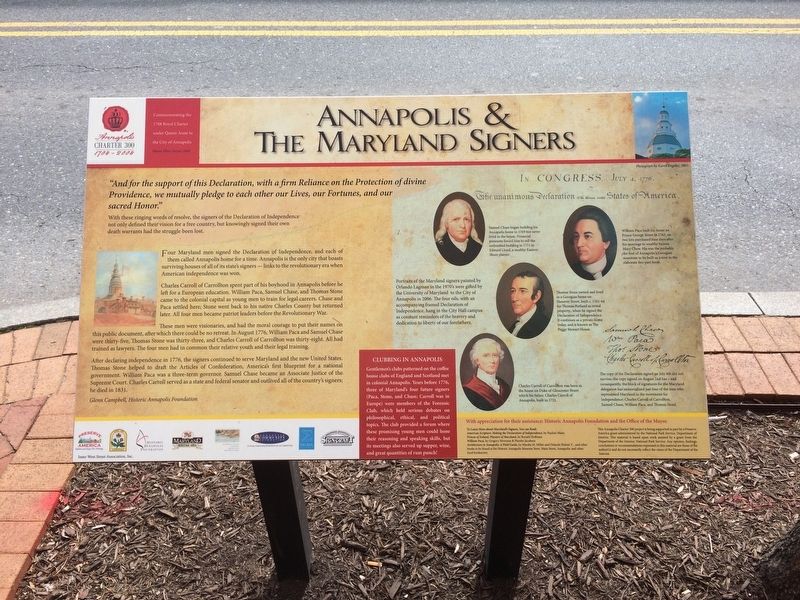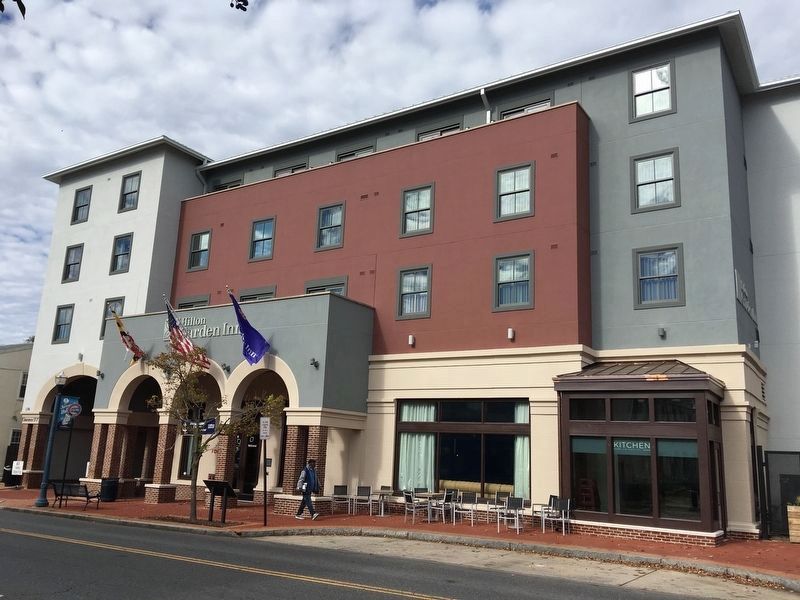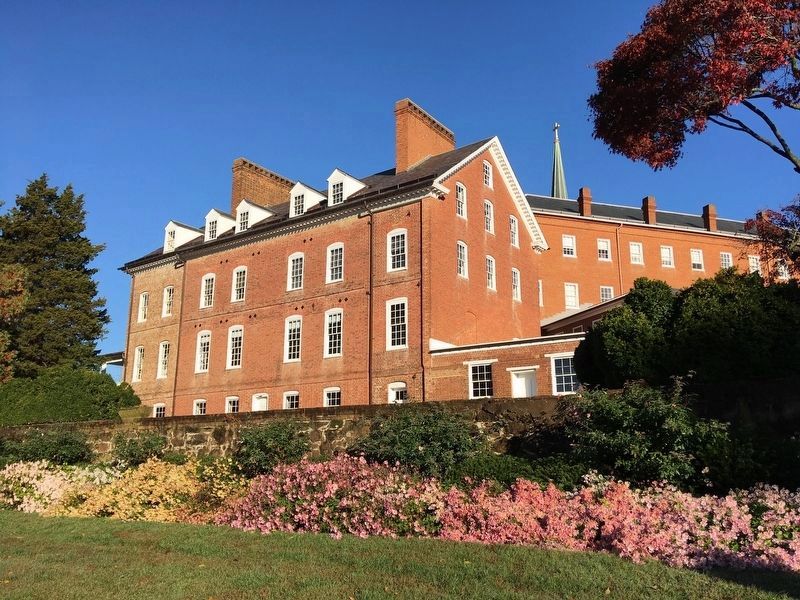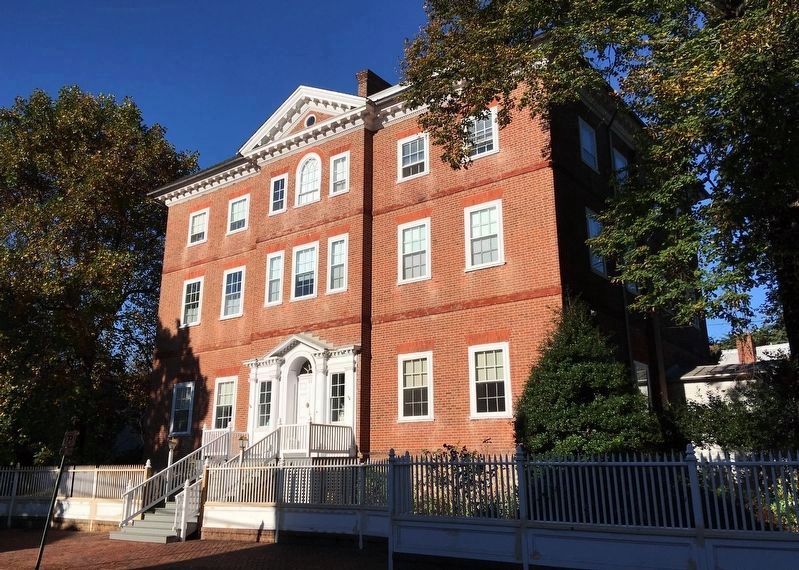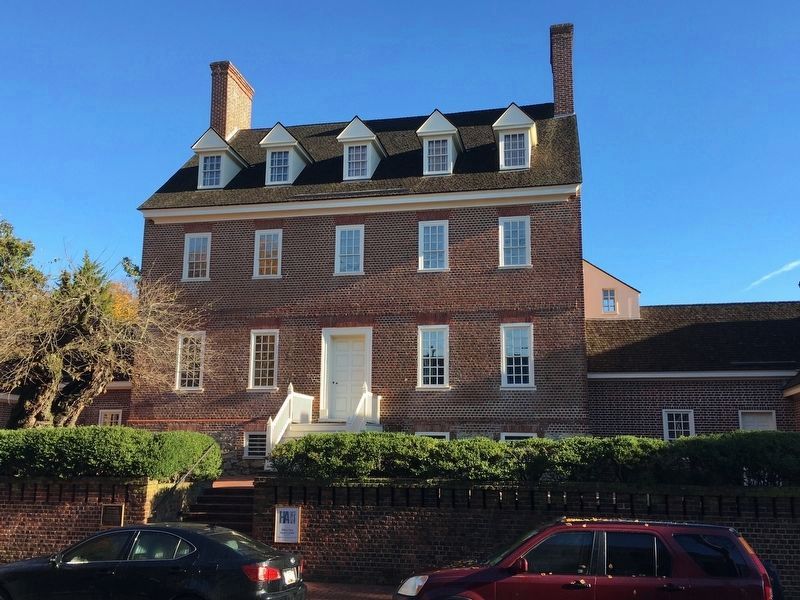Annapolis in Anne Arundel County, Maryland — The American Northeast (Mid-Atlantic)
Annapolis & The Maryland Signers
Annapolis Charter 300 1708-2008
— Commemorating the 1708 Royal Charter under Queen Anne to the City of Annapolis —
"And for the support of this Declaration, with a firm Reliance on the Protection of divine Providence, we mutually pledge to each other our Lives, our Fortunes, and our sacred Honor."
With these ringing words of resolve, the signers of the Declaration of Independence not only refined their vision of a free country, but knowingly signed their own death warrants had the struggle been lost.
Four Maryland men signed the Declaration of Independence, and each of them called Annapolis home for a time. Annapolis is the only city that boasts surviving houses of all its state's signers — links to the revolutionary era when American independence was won.
Charles Carroll of Carrollton spent part of his boyhood in Annapolis before he left for a European education. William Paca, Samuel Chase, and Thomas Stone all came to the colonial capital as young men to train for legal careers. Chase and Paca settled here; Stone went back to his native Charles County but returned later. All four men became patriot leaders before the Revolutionary War.
These men were visionaries, and had the moral courage to put their names on this public document, after which there could be no retreat. In August 1776, William Paca and Samuel Chase were thirty-five. Thomas Stone was thirty-three, and Charles Carroll of Carrollton was thirty-eight. All had trained as lawyers. The four men had in common their relative youth and their legal training.
After declaring independence in 1776, the signers continued to serve Maryland and the new United States. Thomas Stone helped to draft the Articles of Confederation, America's first blueprint for a national government. William Paca was a three-term governor. Samuel Chase became an Associate Justice of the Supreme Court. Charles Carroll served as a state and federal senator and outlived all of the country's signers; he died in 1831.
Glenn Campbell, Historic Annapolis Foundation
[Image caption:]
Photograph by Karen Engelke, 2005.
In Congress. . July 4, 1776.
The unanimous Declaration of
the thirteen united States of America.
Portraits of the Maryland signers painted by Orlando Lagman in the 1970's were gifted by the University of Maryland to the City of Annapolis in 2006. The four oils, with an accompanying framed Declaration of Independence, hang in the City Hall campus as constant reminders of the bravery and dedication to liberty of our forefathers.
Samuel Chase began building his Annapolis home in 1769 but never lived in the house. Financial pressures forced him to sell the unfinished building in 1771 to Edward Lloyd, a wealthy Eastern Shore planter.
William Paca built his home on Prince George Street in 1763, on two lots purchased four days after his marriage to wealthy heiress Mary Chew. His was probably the first of Annapolis's Georgian mansions to be built as a unit in the elaborate five-part form.
Thomas Stone owned and lived in a Georgian home on Hanover Street, built c. 1761-64 for Thomas Rutland as rental property, when he signed the Declaration of Independence. IT continues as a private home today, and is known as The Peggy Steward House.
Charles Carroll of Carrollton was born in the house on Duke of Gloucester Street which his father, Charles Carroll of Annapolis, built in 1721.
The copy of the Declaration signed on July 4th did not survive; the copy signed on August 2nd
has — and consequently, the block of signatures for the Maryland delegation has immortalized just four of the men who represented Maryland in the movement for independence: Charles Carroll of Carrollton, Samuel Chase, William Paca, and Thomas Stone.
With appreciation for their assistance: Historic Annapolis Foundation and the Office of the Mayor.
To Learn More about Maryland's Signers, You can Read:
American Scripture: Making the Declaration of Independence, by Pualine Maier
Princes of Ireland, Planters of Maryland, by Ronald Hoffman
William Paca, by Gregory Stiverson & Phoebe Jacobsen
Architecture in Annapolis: A Field Guide, by Marsha M. Miller and Orlando Ridout V...and other books can be found at the Historic Annapolis Museum Store, Main Street, Annapolis, and other local bookstores.
This Annapolis Charter 300 project is being supported in part by a Preserve America grant administered by the National Park Service, Department of Interior. This material is based upon work assisted by a grant from the Department of the Interior, National Park Service. Any opinion, findings, conclusions or recommendations expressed in this material are those of the author(s) and do not necessarily reflect the views of the Department of the Interior.
Erected
2008 by The City of Annapolis.
Topics. This historical marker is listed in these topic lists: Arts, Letters, Music • Colonial Era • War, US Revolutionary. A significant historical date for this entry is July 4, 1776.
Location. 38° 58.657′ N, 76° 29.946′ W. Marker is in Annapolis, Maryland, in Anne Arundel County. Marker is on West Street (Route 450) near Munroe Court, on the right when traveling west. Touch for map. Marker is at or near this postal address: 160 West Street, Annapolis MD 21401, United States of America. Touch for directions.
Other nearby markers. At least 8 other markers are within walking distance of this marker. George Washington’s Resignation (a few steps from this marker); Art in Annapolis (about 300 feet away, measured in a direct line); On this site on November 25, 1960 (about 400 feet away); Light House Bistro (about 600 feet away); "Preservation Was A Fight!" (about 600 feet away); Asbury United Methodist Church (about 700 feet away); The Old Fourth Ward (about 800 feet away); Lincoln in Annapolis (approx. 0.2 miles away). Touch for a list and map of all markers in Annapolis.
Also see . . . Signers of the Declaration of Independence. (Submitted on November 9, 2018, by Howard C. Ohlhous of Duanesburg, New York.)
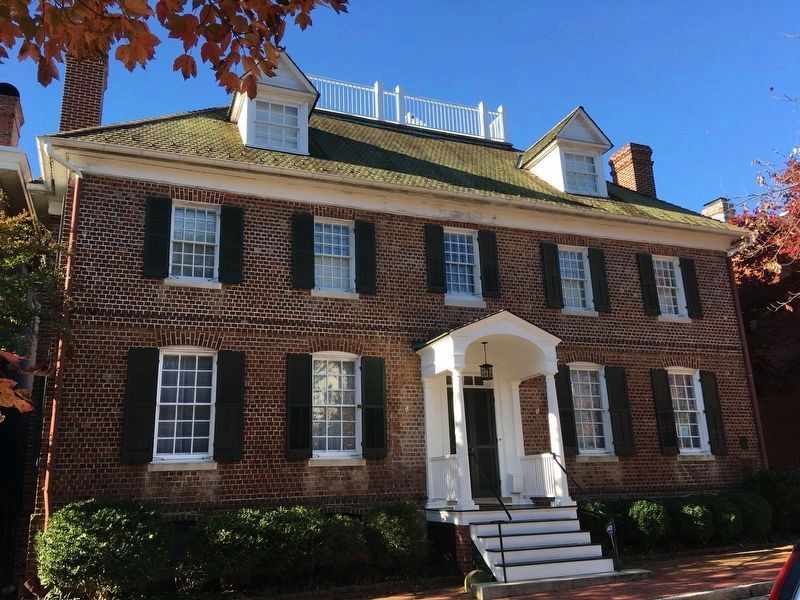
Photographed By Howard C. Ohlhous, November 7, 2018
6. Thomas Stone's House at 207 Hanover Street in Annapolis
The Peggy Stewart House, also known as the Rutland-Jenifer-Stone House, is a Georgian style house in Annapolis, built between 1761 and 1764 by Thomas Rutland as a rental property, it was owned at various times by Thomas Stone and Daniel of St. Thomas Jenifer.
Credits. This page was last revised on December 14, 2023. It was originally submitted on March 2, 2018, by Devry Becker Jones of Washington, District of Columbia. This page has been viewed 700 times since then and 62 times this year. Photos: 1. submitted on March 2, 2018, by Devry Becker Jones of Washington, District of Columbia. 2, 3, 4. submitted on November 9, 2018, by Howard C. Ohlhous of Duanesburg, New York. 5, 6. submitted on November 12, 2018, by Howard C. Ohlhous of Duanesburg, New York. • Bill Pfingsten was the editor who published this page.
